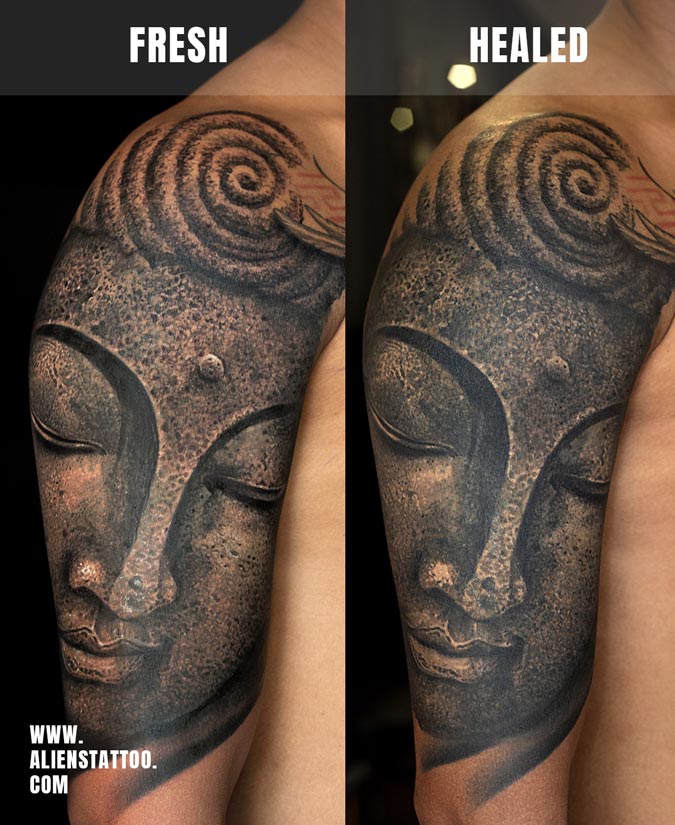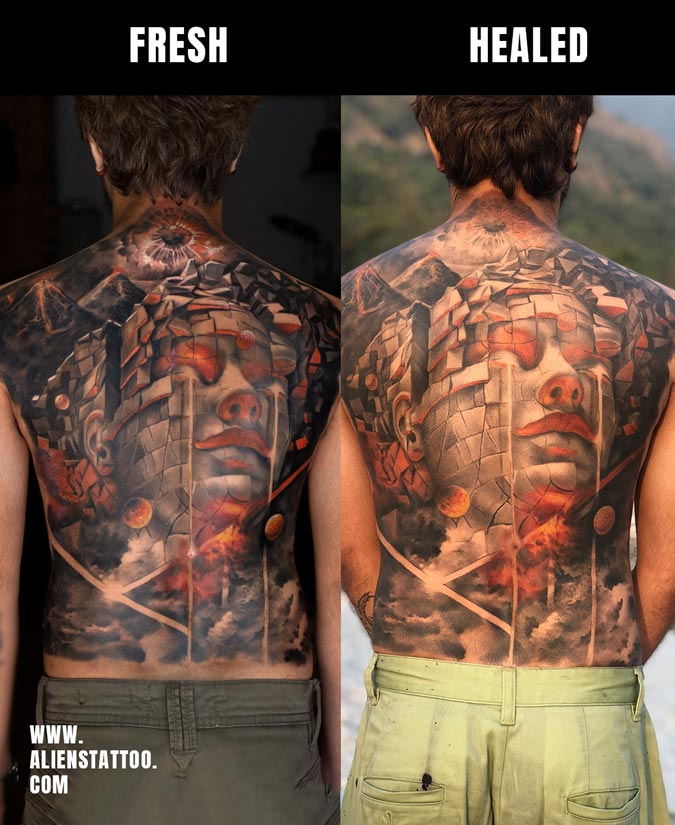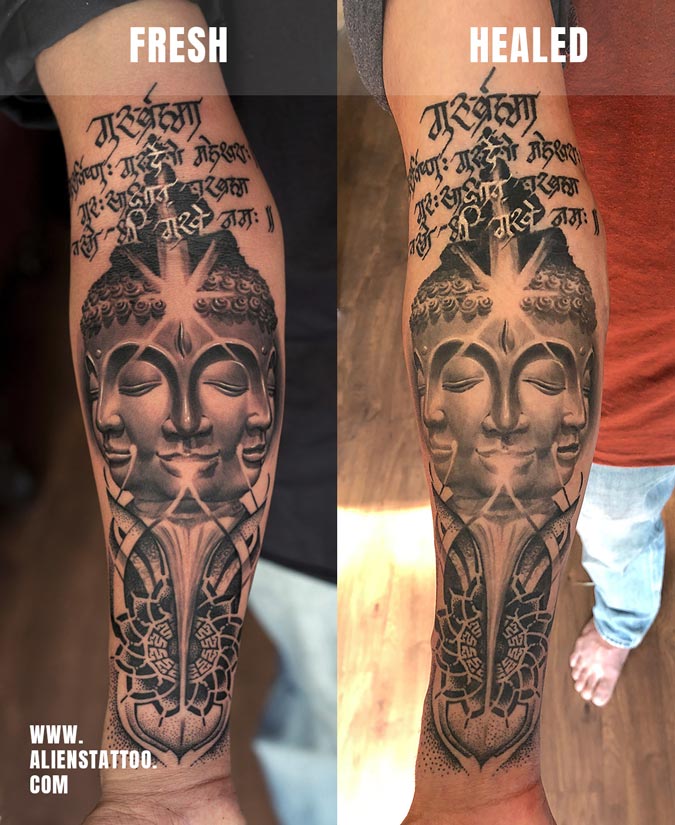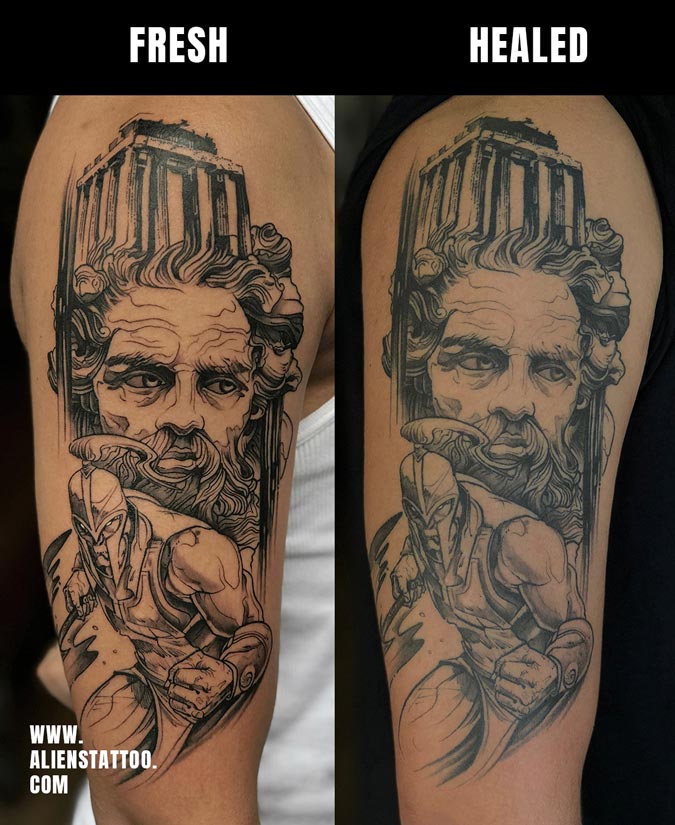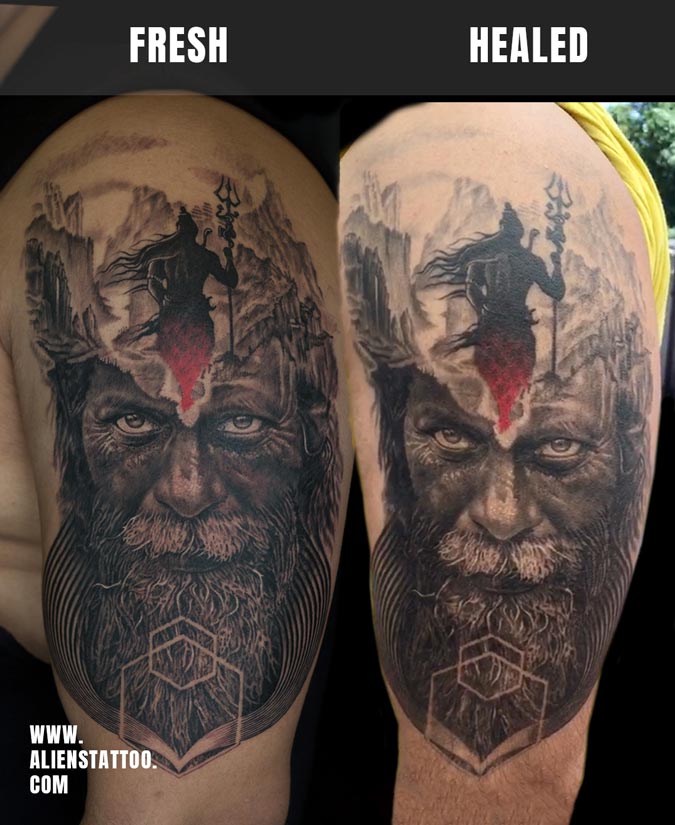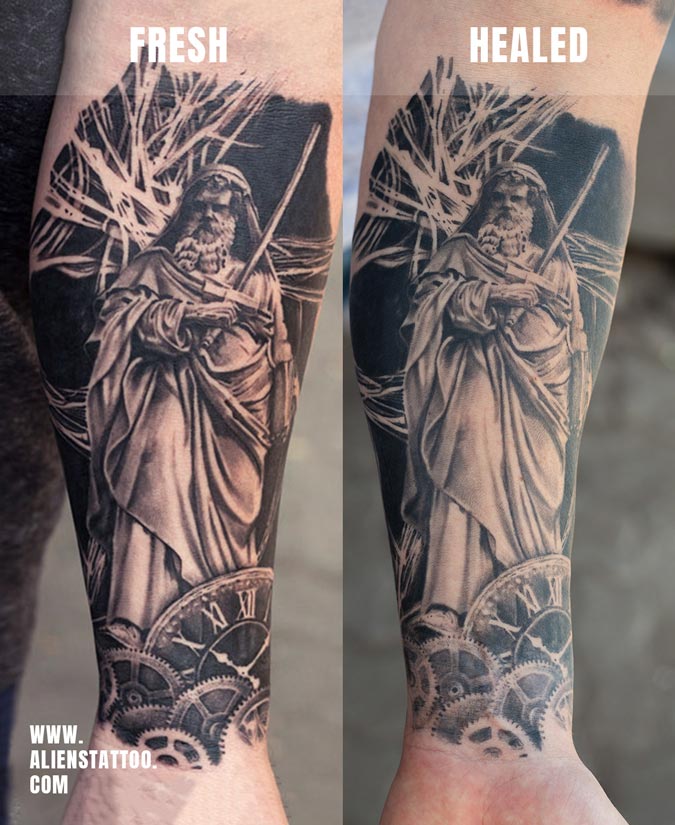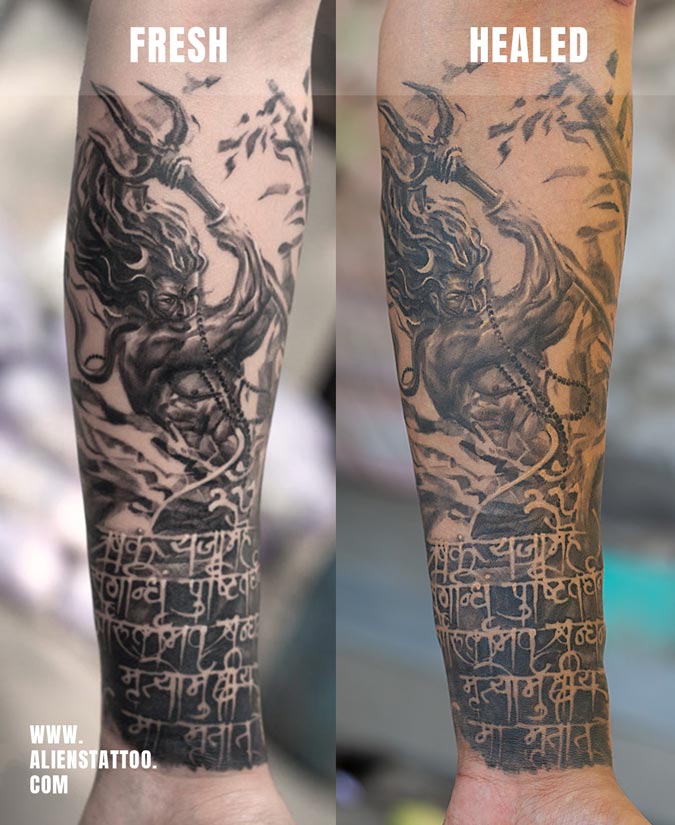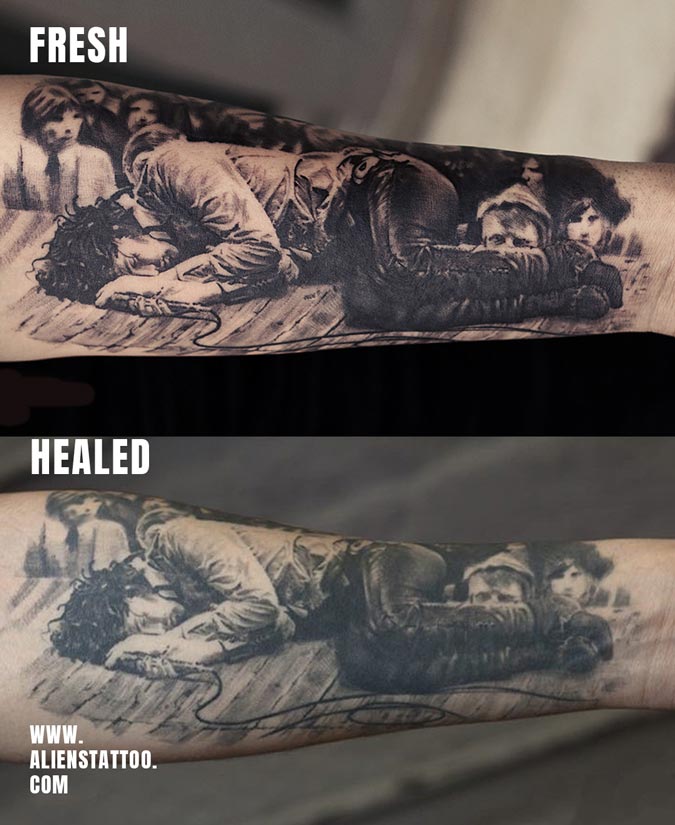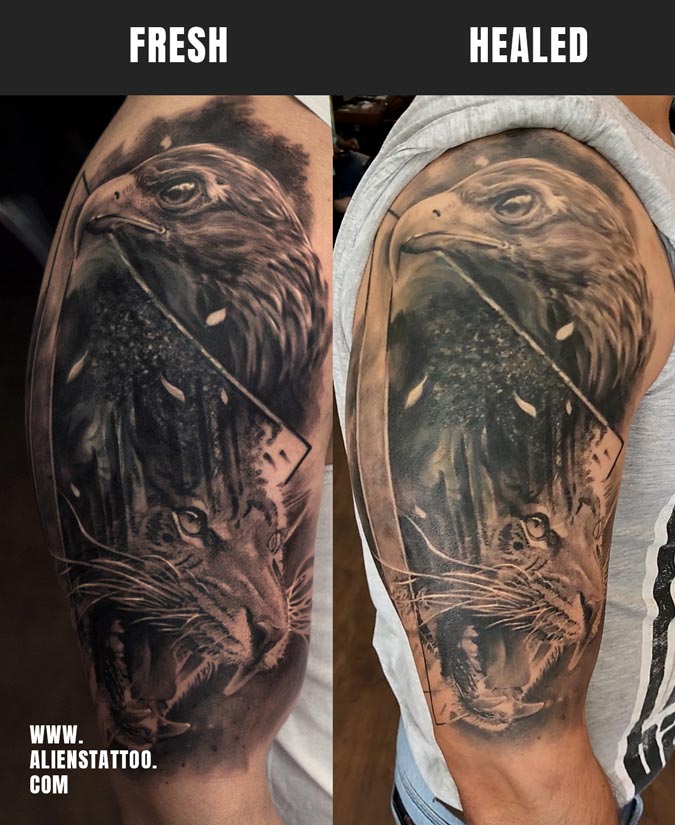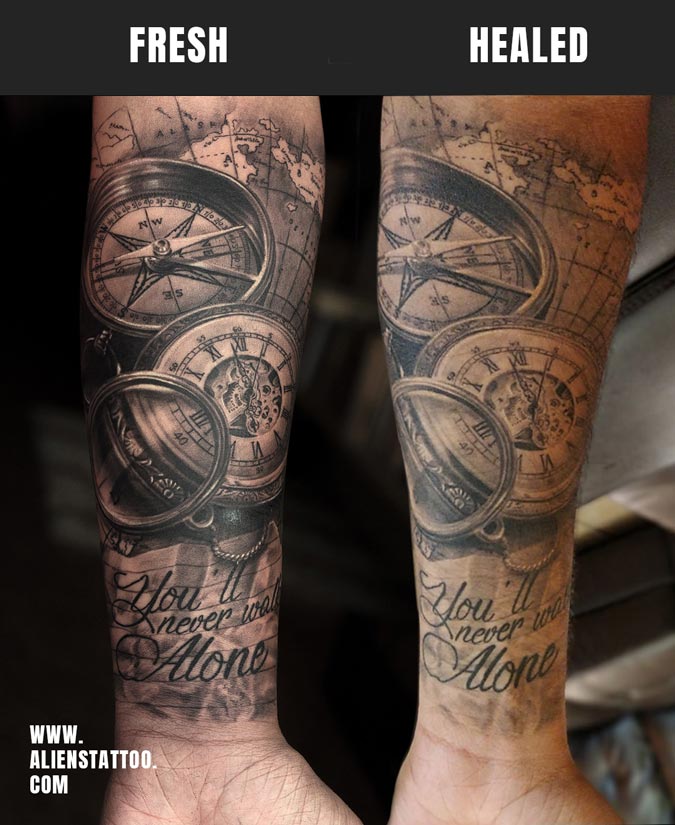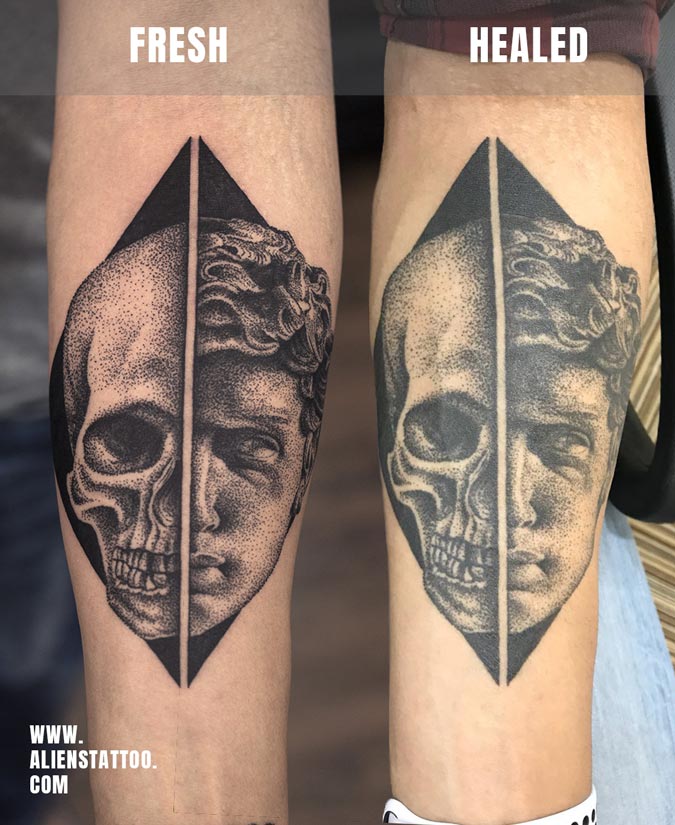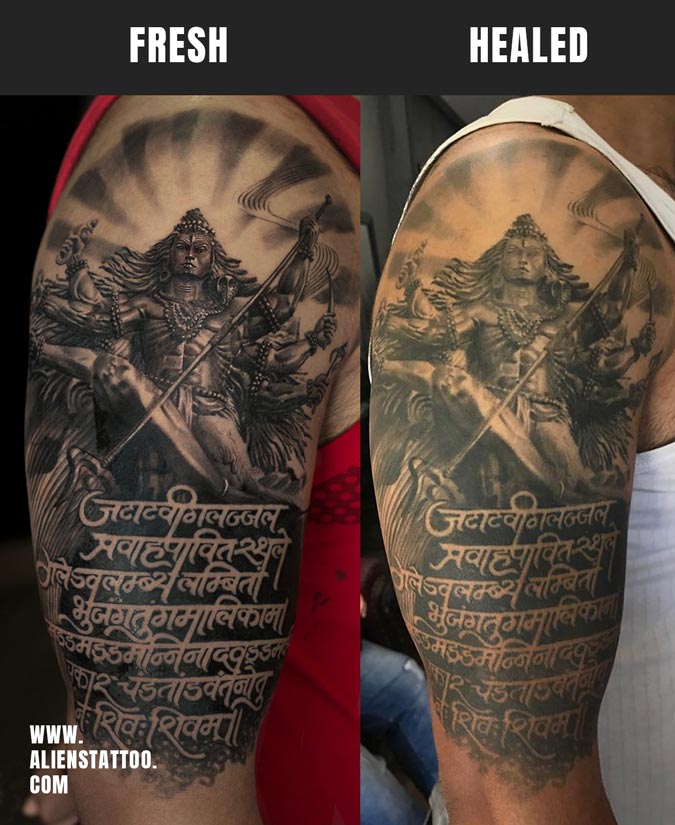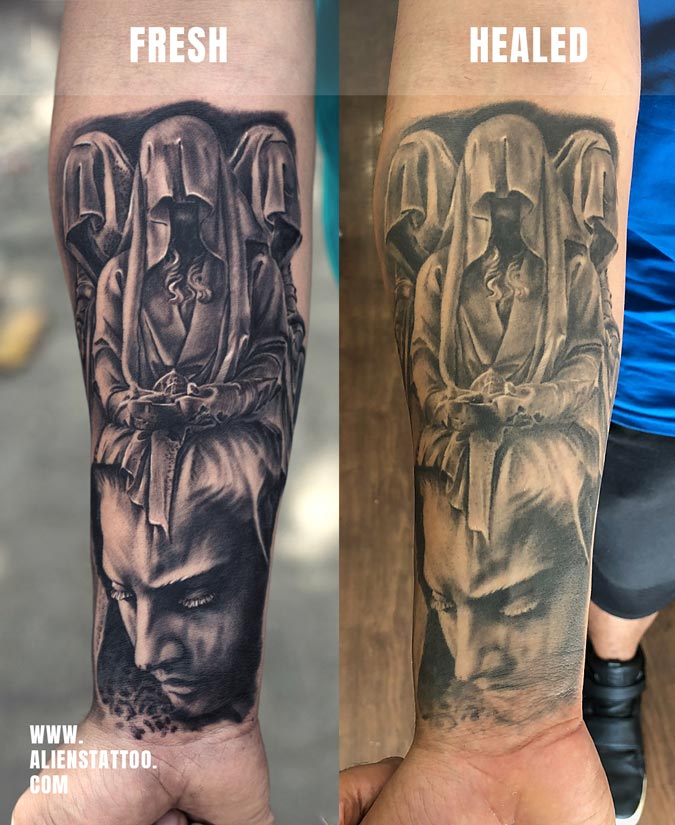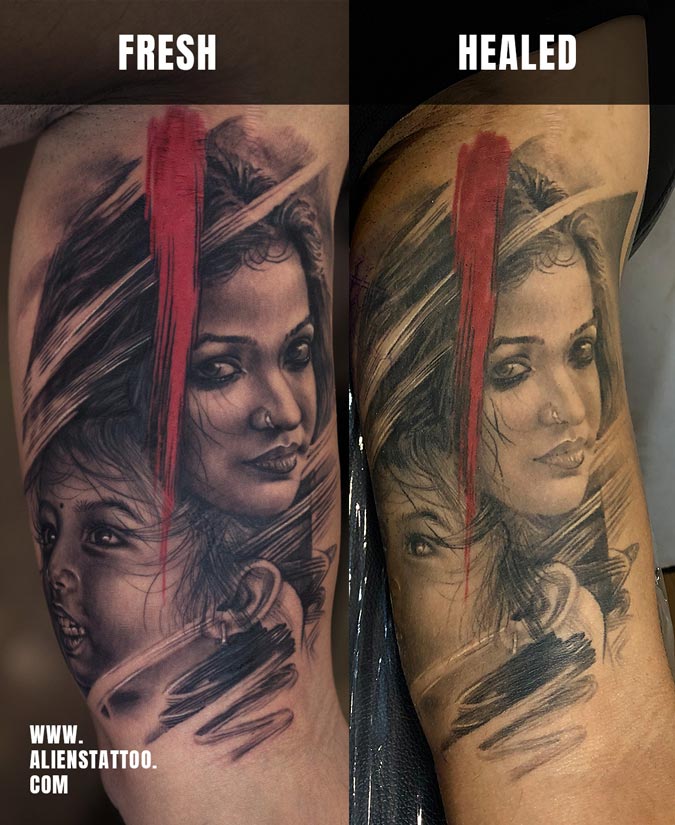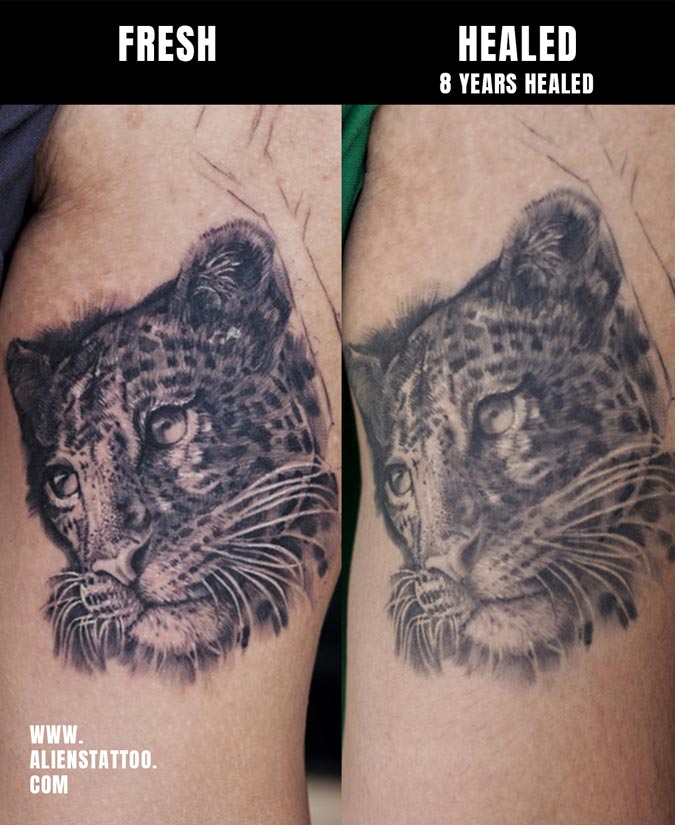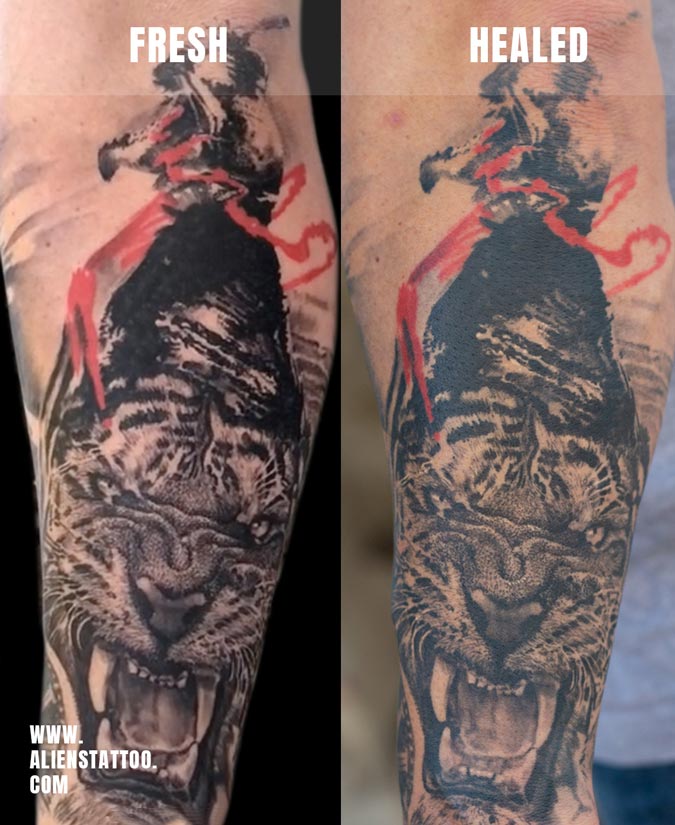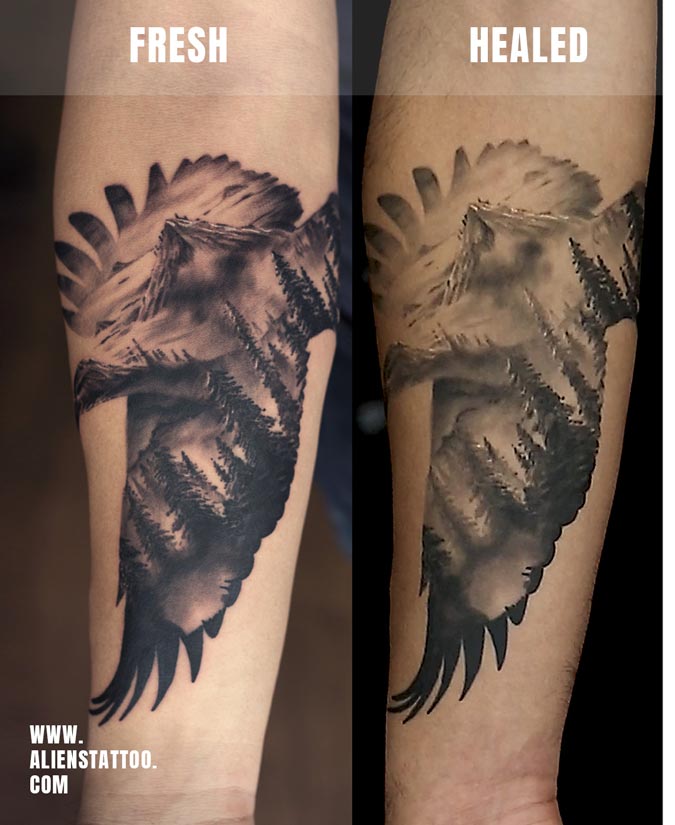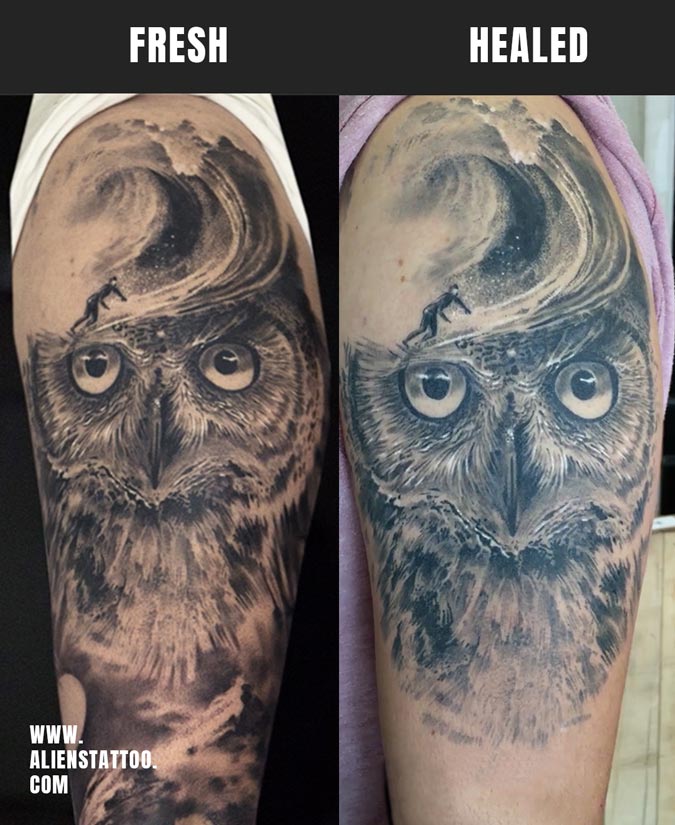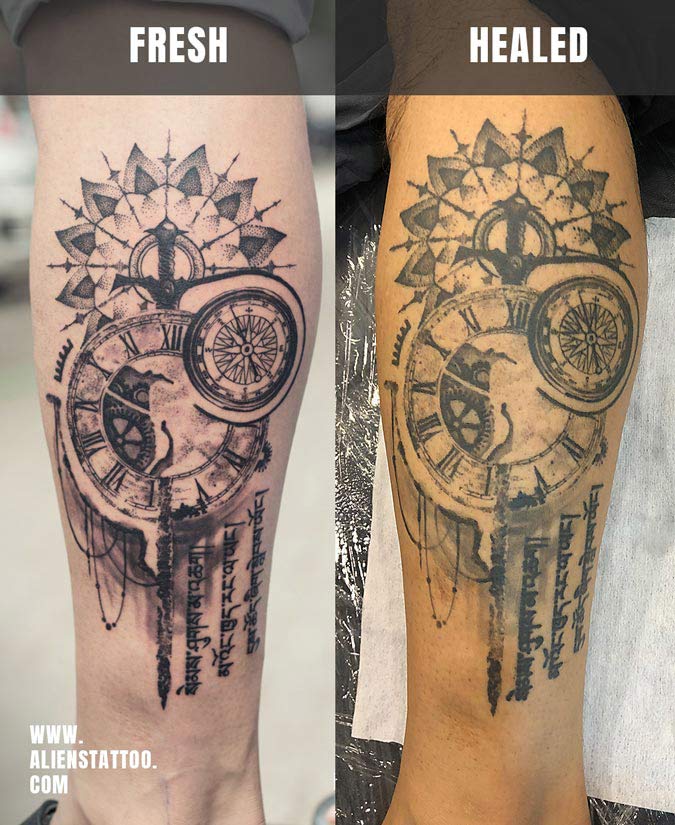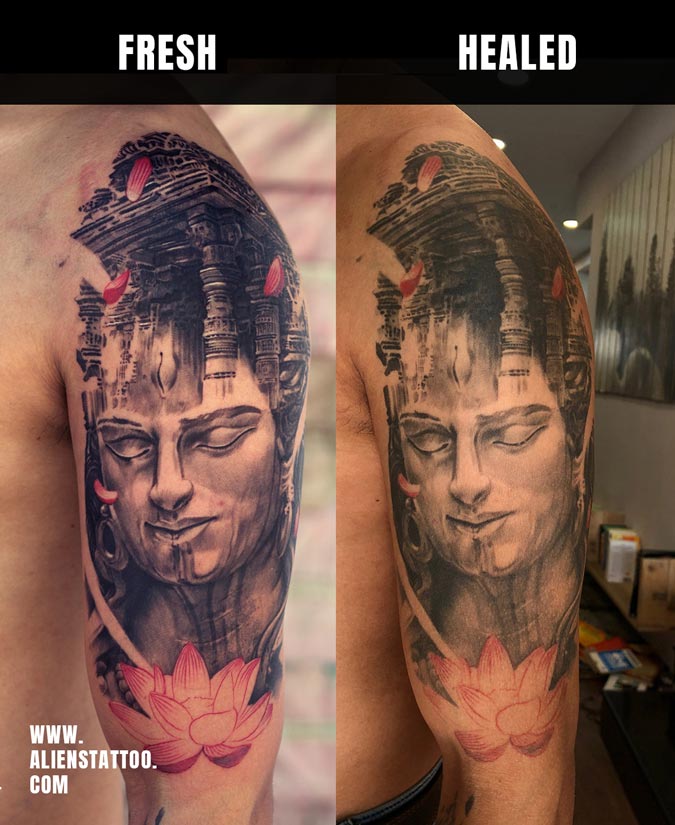Tattoo Aftercare: What You Need To Know To Avoid Badly Healed And Infected Tattoos
- Sunny Bhanushali
- Nov 18, 2020
- 9 min read
Updated: Oct 7, 2025
This post is about tattoo aftercare and the factors which may lead to bad healing caused by infections. This post will guide you through the best practices of aftercare. I recommend you to read it all, though you can also jump through the sections as follows:
Whenever people see badly healed tattoos, the first thing they do is judge the artist or the studio. There is no consideration of other factors that might be the cause. Very few understand the importance of the aftercare and that it contributes to more than 70% for the quality of the healed product.
The day you got it, it might look amazing and fantastic. However, with irresponsible (or being unaware of its) aftercare, that same tattoo design can turn into a disaster within weeks.
Tattoo Aftercare plays a very important role when it comes to good healing.
My name is Sunny Bhanushali and I am a tattoo artist. I am not trying to blame our clients, but staying unbiased and sharing my experience of 12 years in this field. I have written this post to help all of you who spend precious time, money, and faith in getting your tattoo from good artists and accidentally ruin it because of ignorance of aftercare. I have written this post because I understand the great pain and suffering one goes through when their beautiful piece of art becomes ruined within a few weeks because something goes wrong while healing, of which you are completely unaware.
Check out this award-winning tattoo from one of the very reputed studios in India, Aliens Tattoo.

This design was done by Sunny Bhanushali (me) at the Goa Tattoo Festival. The client sat like a rock for 2 days for this, which won Best of Large Colour Tattoo at the show. However, after the show, the client didn’t follow the aftercare given by the artist, and in no time it got infected. She had to visit a doctor to stop the spread of infection, and had mild pus formation within 3 days. With the strong dose of antibiotics, the wound recovered, though there was too much colour loss and the final product turned out to be a mess.
BAD AFTERCARE
Another example where artists are blindly blamed for bad work.

This tattoo was done by Allan Gois at one of the Indian Tattoo Conventions. It took 2 consecutive sessions to finish. The convention was near the beach, and the climate was hot. The client got a little rash on his skin by the end of the day, Next day the whole area was swollen and red until he took a few antibiotics to suppress the infection. It recovered well, however the ink lost its contrast and faded more than expected. The reason for infection was that the client left the tattoo open all the time while he was moving around the city.
GOOD HEALED TATTOOS
Amazingly healed designs from the same studio! The above badly healed tattoos can be fixed through retouching it again. However, it's hard to restore its original beauty. We keep track of all the tattoos done by us, and try our best to make sure things are going well and tattoo care is followed. Check out some of these beautifully healed designs from the same studio.
Tattoo Aftercare
Aftercare plays a very important role in the healing of a tattoo. It is the process of care you need to take as soon as you get your design. As far as my experience goes, aftercare varies from place to place, and what kind of climate you live in. Your artist knows the best, so it is important you listen to them carefully while they are explaining the aftercare process, keep asking them questions if you don’t understand it, but make sure you get it all right.
Following are the 2 different aftercare processes which I recommend, that are quite generic and mostly work in all climatic conditions.
Recommended Aftercare - First one consists of the use of Dermalize, This is the best and most effective way of aftercare and works in all climatic conditions (excluding extreme ones).
As soon as you get your tattoo done, wash it with cold water and put a thin layer of petroleum jelly or A&D Ointment over it and let it be open for at least 20 mins.
Clean it again with mild soap, let it dry for a few minutes and apply Dermalize.
Keep the Dermalize on for 5 to 7 Days.
Remove it carefully. If you find it hard to remove the wrap then please consult your tattoo artist and get it removed by them.
Wash it with mild soap and let it be open without applying anything for a few hours.
Apply Aliens Tattoo Ointment or any good moisturizer cream once or twice a day (more than twice a day if your skin is dry) for 4-6 days.
If your skin feels mildly itchy, do not scratch but gently pat on the itchy area till the itching subsides.
Stay away from the swimming pool, sunlight and beach water for the first 4 weeks (also read Life Time After Care).
Don’t exercise for the first 2 weeks and avoid sweating as much as you can.
Eat good food, add more protein in your meal. Avoid food which may cause stomach/digestion issues. Green vegetables are the best for this.
Keep yourself hydrated, it keeps your skin moist and healthy.
Avoid alcohol and stay away from recreational drugs for at least 3 days.
Considering the climate and the lifestyle of Indians, we recommend antibiotic medicine twice a day for 5 days, with the consultation of your doctor.
If you feel that your tattoo is infected, consult your artist and a doctor. (See how you can identify the infection on your tattoo)
Dermalize - It is a thin self-adhesive film that provides a moist healing environment during the initial and the most critical healing stage of a tattoo wound. It is a new solution to the generic cling film, which has been improperly used in the aftercare so far. It protects the new design from friction and provides a waterproof, anti-bacterial barrier that prevents pathogens and external contaminants from entering the wound. The film is breathable, lets oxygen in and allows excess moisture vapour to be released from the wound. It’s light to wear, flexible, and stretchable which allows it to be placed anywhere on the body and stay there for several days. Reduced scabbing, reduced risk of infection, no rubbing clothes or other external factors that will damage the tattoo. Read More about Dermalize.
Aliens Tattoo Cream - It is a homemade ointment-based aftercare cream by Aliens, one of the best tattoo aftercare solutions you will ever find. It is chemical-free, fragrance-free, antibacterial cream specially made to keep your skin moist and healthy, allowing your skin to heal faster. With more than 12 years of experience in this field, we have tried and tested tons of aftercare products before coming up with Aliens Tattoo Cream. You can only get it exclusively from our Aliens Tattoo Studio! Contact us to buy it now
(GENERIC AFTERCARE) - This one is a widely used and the oldest aftercare routine.
Right after you get a tattoo, cover it in a thin layer of petroleum jelly or A&D Ointment and put a loose bandage over it. Keep the bandage on while you are heading back home.
Remove the bandage after 6 to 8 hours. Gently wash the skin with antimicrobial mild soap and water and pat dry.
Apply a layer of antibacterial ointment or Aliens Cream twice or thrice a day for 2 weeks, don’t put on another bandage.
Don’t let it dry, keep it moist but not too much. Your skin needs air to heal faster, excessive use of ointment may block it and may slow down the healing process, which will increase chances of infection.
Do not peel or scratch the scabs, let them come off on their own. Removing them forcefully will cause colour loss in that area.
Always clean your wound with cold water, do not use hot water as it may damage the new fresh soft skin and cause improper healing of the area (at least for the first 6 weeks)
Keep away from the swimming pool, sunlight and beach water for the first 4 weeks (Read lifetime aftercare).
Don’t exercise for the first 2 weeks and avoid sweating as much as you can.
Eating good food with more protein and green vegetables is better for healthy healing.
If you feel that your tattoo is infected, consult your artist or a doctor.
(See how you can identify the infection on your tattoo and important how to avoid it)
Is there a lifetime care procedure needed to maintain the quality of your tattoo?
Yes, and it is as important as your initial aftercare. If you want to maintain a good contrast, sharpness and vibrance, you have to take good care of your art for life. You have to nurture your tattoo to keep it healthy and nice. Following are the most important lifetime aftercare points to remember:
Keep it away from the sun as much as you can as direct sunlight will fade it and make it look muddy and low on contrast.
Use a good sunscreen to protect it from the sun (SPF 45 or higher is best).
Avoid sea water or chlorine water as much as you can. If you are into swimming or travelling then you have to use waterproof sunscreen (such as DermaSwim Pro or any similar product).
Use a good moisturiser (scent and chemical-free) on your skin for at least a few days a week. We recommend Aliens Tattoo Cream!
Too much increase or decrease in the size of your muscles (either through muscle building or losing weight) could distort the design and may also shift its original position. Hence, avoid getting tattooed if you are planning to bring extreme body size changes.
Always stay hydrated so that your skin stays moist. As doctors say, the more water you drink, the better your skin gets. Healthy skin keeps your tattoo healthy.
How to Indentify a Tattoo Infection
Early symptoms of an infection are redness, pain and a lot of irritation in the area. After the process, you will have a bandage on. However, if you feel a lot of irritation and development of redness (usually due to bacterial activity), take off the bandage, wash it with cold water and consult your tattoo artist or a doctor as soon as possible.
Your skin needs air to heal, too much use of petroleum jelly/or any aftercare product can suffocate the skin and may lead to infection.
Tattooed skin is like an open wound, too much dust or water around can allow bacteria to enter the wound and multiply fast. Follow proper instructions given by your tattoo artist. Consult them if you feel that you missed out on something.
If your tattoo is not Dermalized, it needs to be open all the time once the first bandage is off. Avoid your skin’s direct contact with bed sheets, pillows, or your home/office upholstery, as this is a very common source for infection. For e.g.: if you get a tattoo on your wrist, and if there is a chance that while sleeping that area might be touching your bedsheets all night, try to wear a full sleeve cotton t-shirt or something similar.
Important points to remember before and after getting a tattoo:
Avoid alcohol a day before and stay hydrated as much as you can.
Eat simple food and make sure you eat healthy and your stomach is full. Avoid food which may cause uneasiness later.
Keep drinking juices and water, have snacks at regular intervals while getting a tattoo (if your design is big and will take more than 4 hours).
Do not consume recreational drugs before or after.
You will experience much lesser pain if you stay hydrated and eat well.
If you are suffering from any disease, please consult your doctor before getting a tattoo.
Getting a tattoo from a good artist is very important, so check out this post - How to find the right tattoo artist
A tattoo takes approximately 90 days to heal completely from the inside out. However, it looks freshly healed within the first 2 weeks, even if it is going through a lot of healing changes.
The skin may develop transparent white patches within 7 days of healing. Nothing to worry about, for it is a very sensitive layer of skin which will heal in some days.
Your tattoo will never look as dark as it looked on day one, there will be at least 20% fading once it is healed. The reason for this is that when you get it done, the ink is filled in all the layers of skin. However, while healing, only the third layer will hold the pigment, and the rest will replace itself with new cells. Newly formed layers are not completely transparent, and that's why you see a difference between a fresh and healed tattoo.







